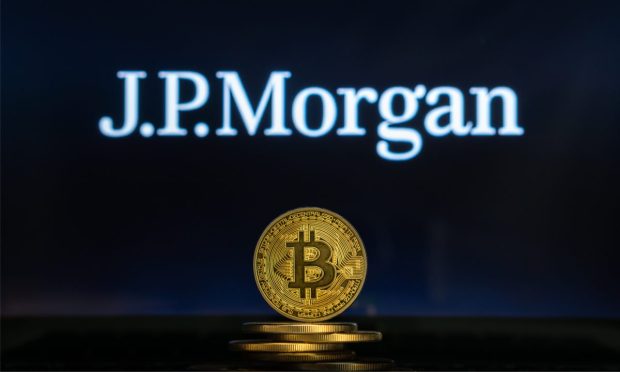JPMorgan, Goldman Dive Deeper Into Crypto, DeFi Amid Market Turmoil

Two major Wall Street banks revealed moves into cryptocurrency derivatives and decentralized finance (DeFi) over the weekend that could be seen as a vote of confidence just when the crypto industry needs one most.
Tyrone Lobban, head of Onyx Digital Assets at J.P. Morgan, said Saturday (June 11) at the CoinDesk Consensus conference that the company is working on several ways to tokenize financial assets like bonds and money market fund shares for use in both traditional markets and DeFi, CoinDesk reported.
And on Monday (June 13), just as crypto lending firm Celsius’s announcement that it was halting withdrawals — meaning it was possibly insolvent — set off a bloodbath in the already shaky crypto market, Goldman Sachs revealed that it is offering clients an ether-linked derivative, executing its first trade with financial services firm Marex Financial, Bloomberg reported.
It’s been a bad three days for the crypto industry with bitcoin tumbling 30% in just a week — and down 70% from its November all-time-high of nearly $69,000 — getting uncomfortably close to $20,000, an important psychological barrier.
See also: Crypto Crisis Evokes Memories of Hedge Fund’s Market-Crippling 1998 Crash
Good News Buried
J.P. Morgan’s tokenization plan is aimed at traditional assets like U.S. Treasuries or money market fund shares.
Over time, Lobban said, the firm believes that these assets “could all potentially be used as collateral in DeFi pools.”
DeFi lending and staking products offer eye-watering yields ranging from 2% to more than 20% — and far higher for riskier offerings — for loaning crypto assets. Although these yields are far higher than those offered by banks, there are growing questions about these products’ long-term, or even medium-term, viability.
Read also: Latest Crypto Turmoil Could Signal the End of Sky-High DeFi Returns
“The overall goal is to bring these trillions of dollars of assets into DeFi, so that we can use these new mechanisms for trading, borrowing [and] lending, but with the scale of institutional assets,” Lobban said.
Institution DeFi is practically an oxymoron thanks to its lack of know your customer (KYC) regulatory compliance, although a handful of platforms are now trying that out. Among other things, it will use the new collateral settlement system the company is building on its private Onyx blockchain, Bloomberg said in May.
That system was tested when two of the banks’ divisions transferred tokenized BlackRock money market fund shares as collateral on Onyx, aiming at “allowing investors to pledge a wider range of assets as collateral and use them outside of market operating hours,” the report said.
It is not, however, aimed primarily at crypto investments.
“What we’ve achieved is the friction-less transfer of collateral assets on an instantaneous basis,” said Ben Challice, J.P. Morgan’s global head of trading services.
Crypto Derivatives
Goldman Sachs’ most recent crypto derivatives announcement was not its first foray into the market but did mark its expansion into derivatives based on the No. 2 cryptocurrency, ether.
Bloomberg reported that the financial product was a non-deliverable forward, offering institutional investors exposure to ETH without purchasing and holding it.
How desirable that’s likely to be when ether is down 35% on the week and 70% since the year began, as of Wednesday (June 15), remains to be seen.
And in March, Goldman became the first major bank to make an over-the-counter cryptocurrency trade, working with crypto investment bank Galaxy Digital, Reuters reported in April.
Nor is it the only major financial institution (FI) in on the action. In May, Japanese investment bank Nomura began offering cryptocurrency derivative contracts, as well as bitcoin futures and options trading, joining Goldman and J.P. Morgan, among others.
As of last year, Bank of America and Citigroup were at least considering crypto futures trading, Reuters added.
If those major FIs stay the course, it would amount to a vote of confidence in crypto.
Sign up here for daily updates on all of PYMNTS’ Crypto coverage.
